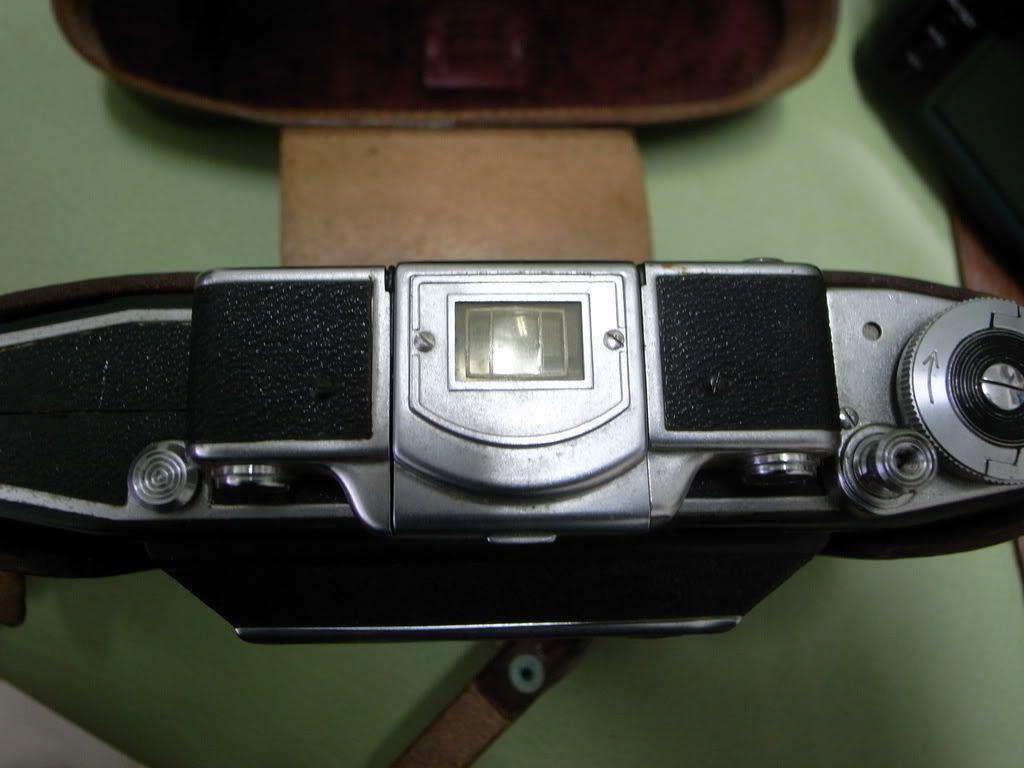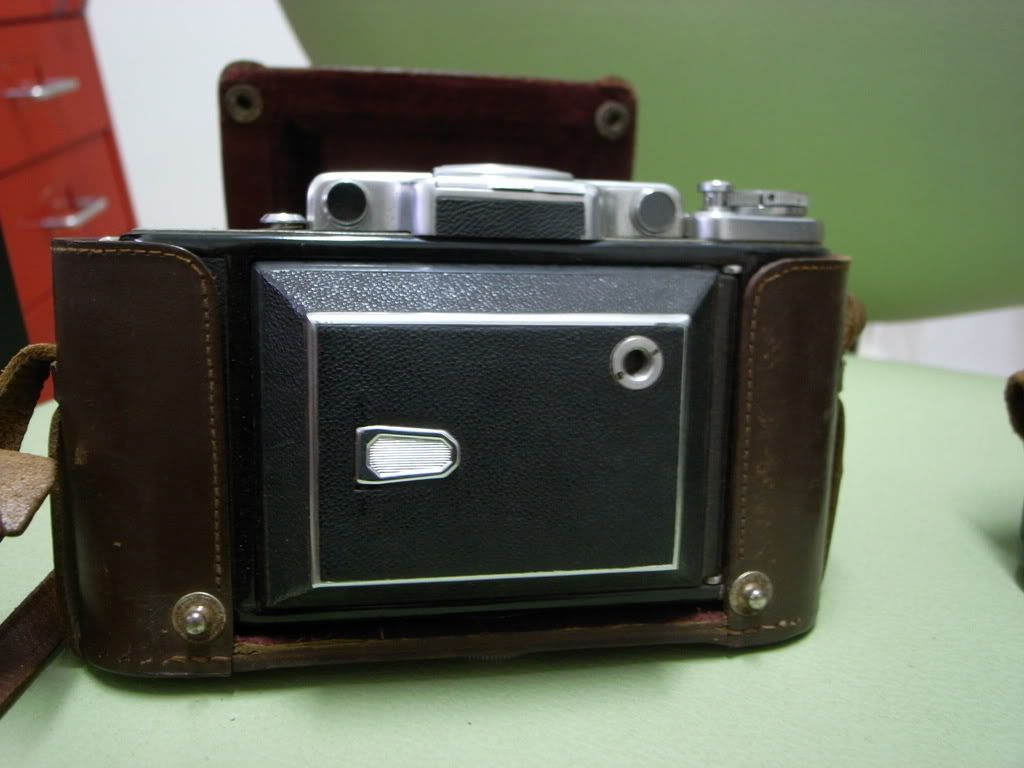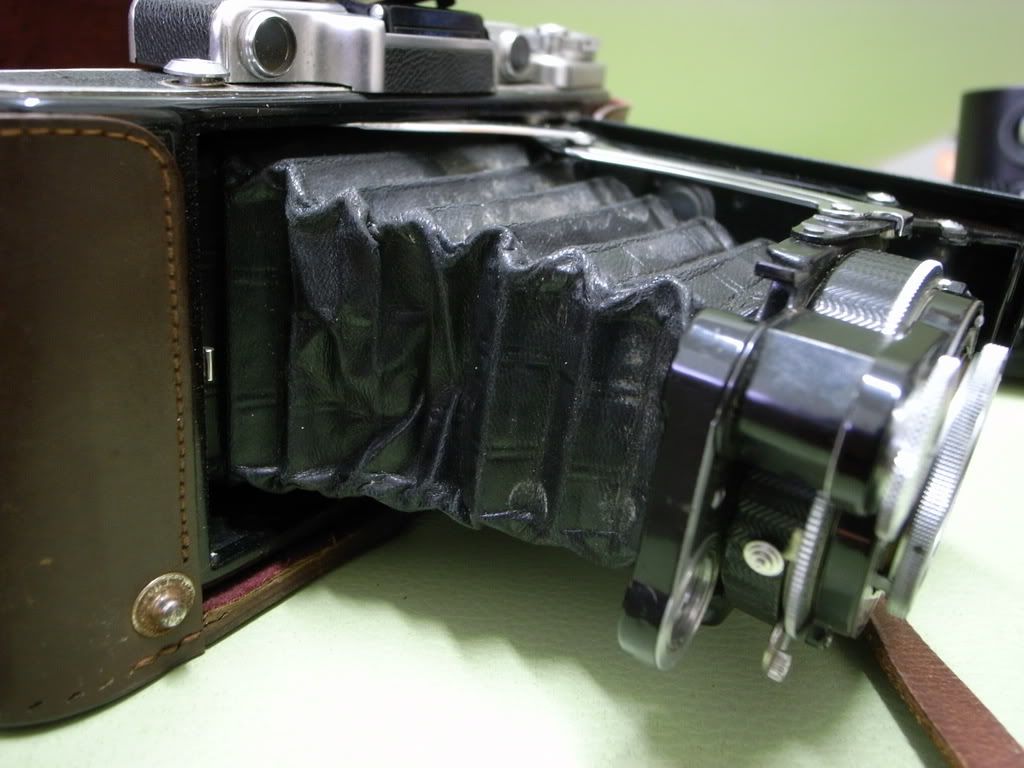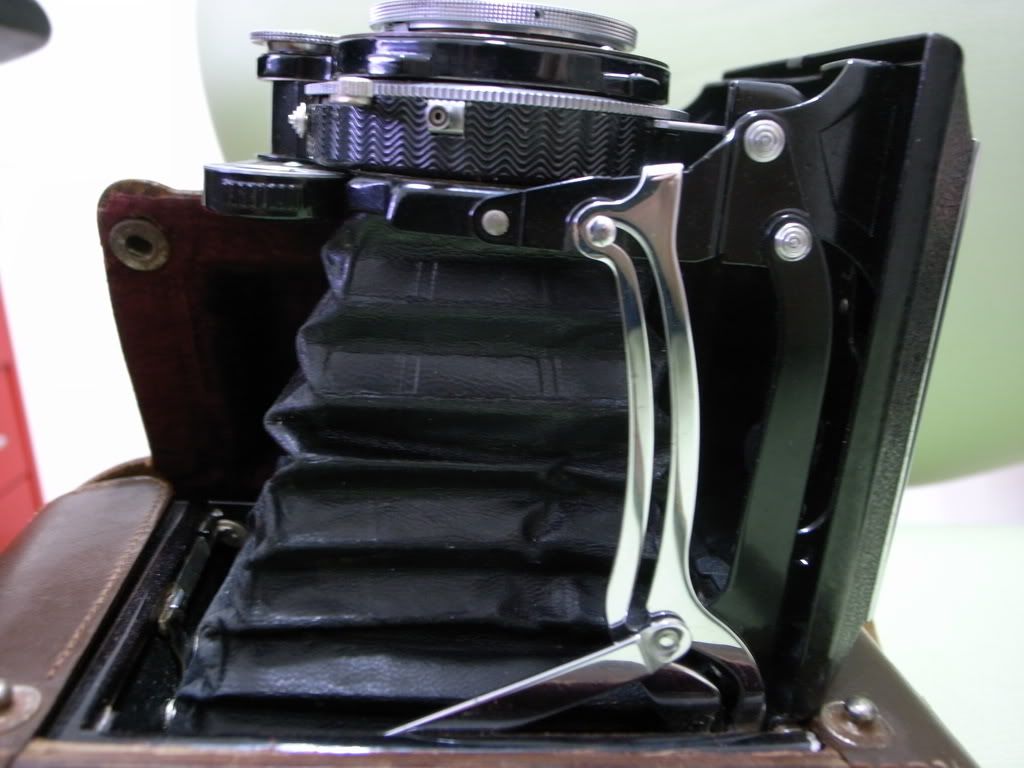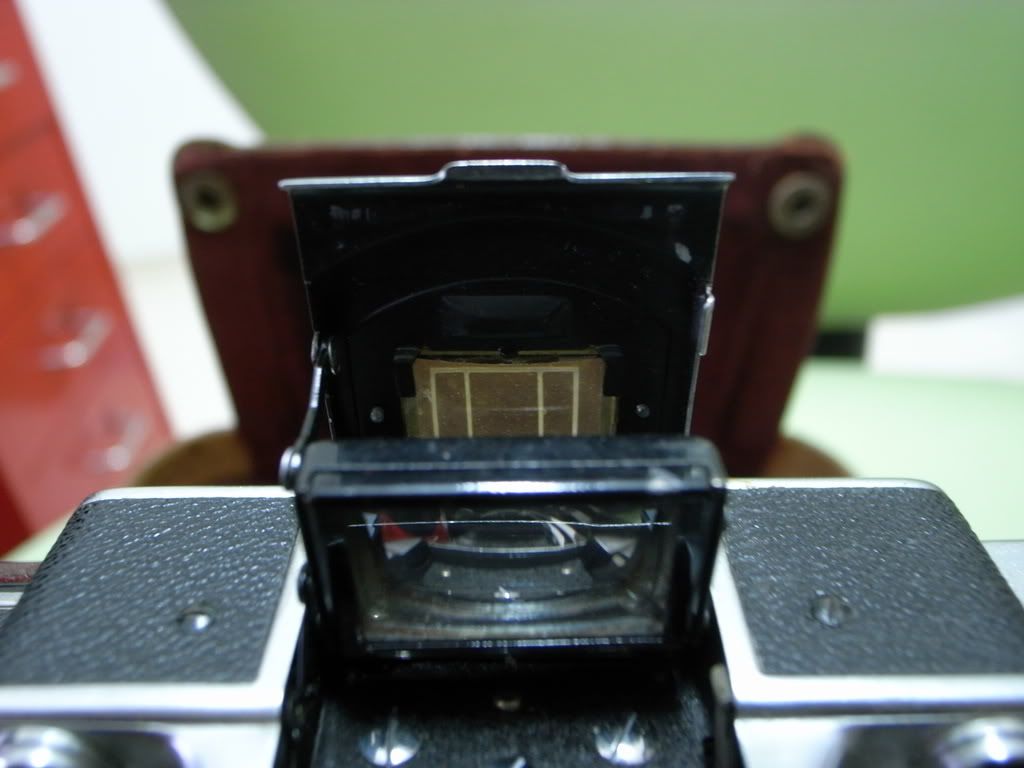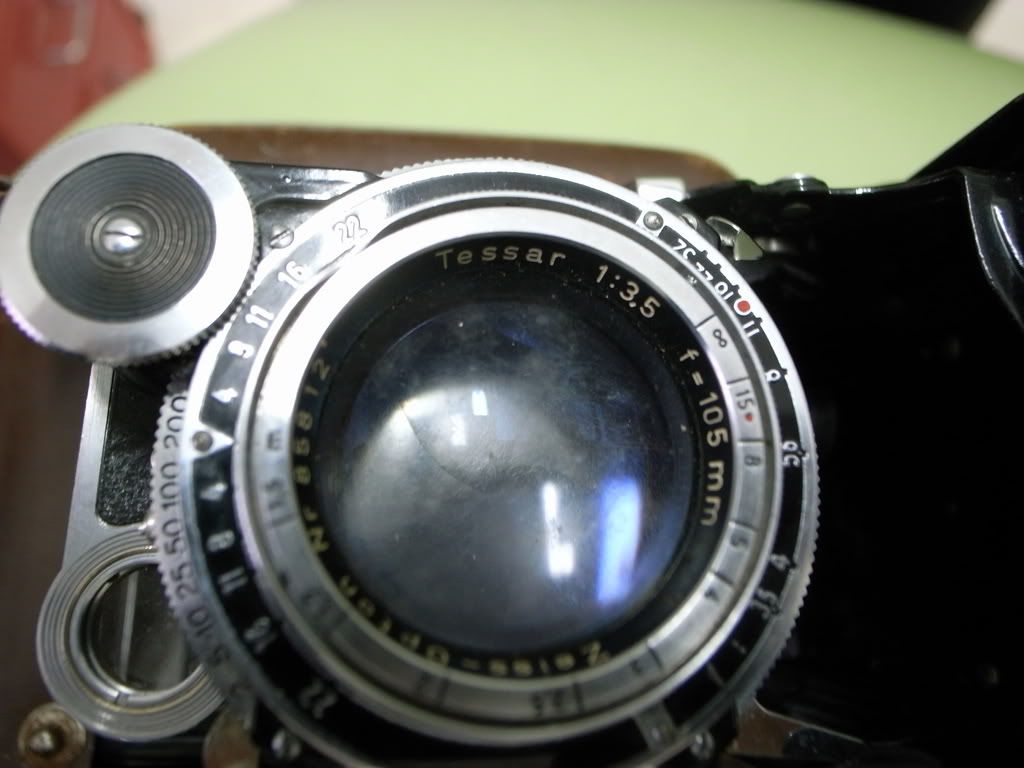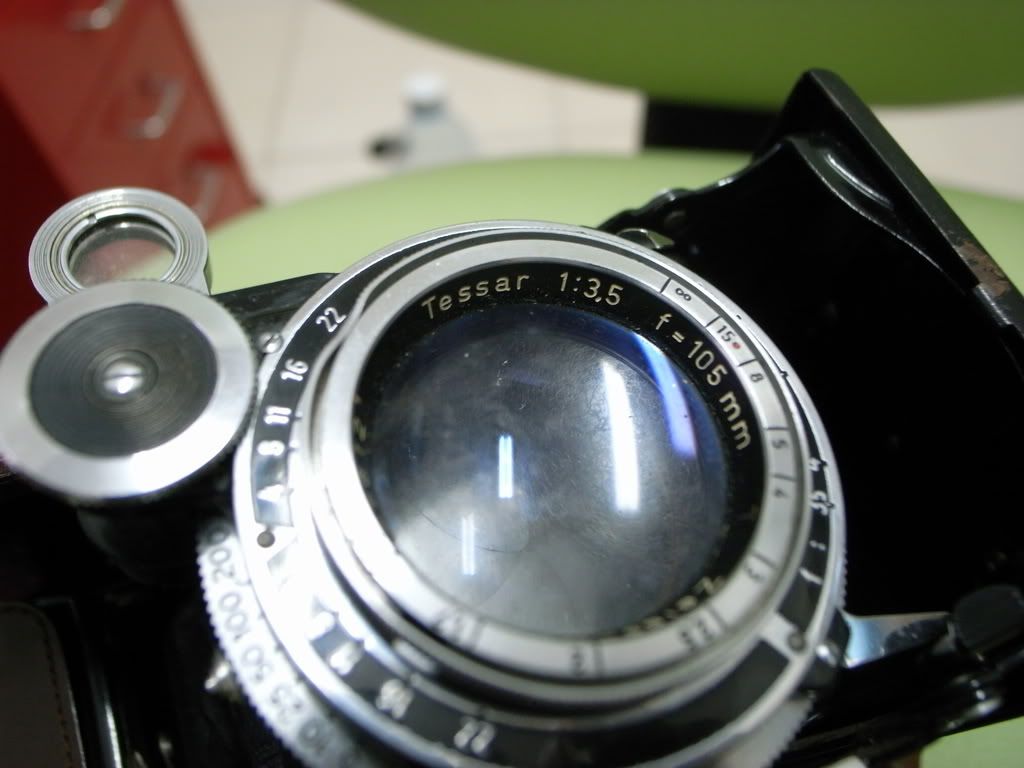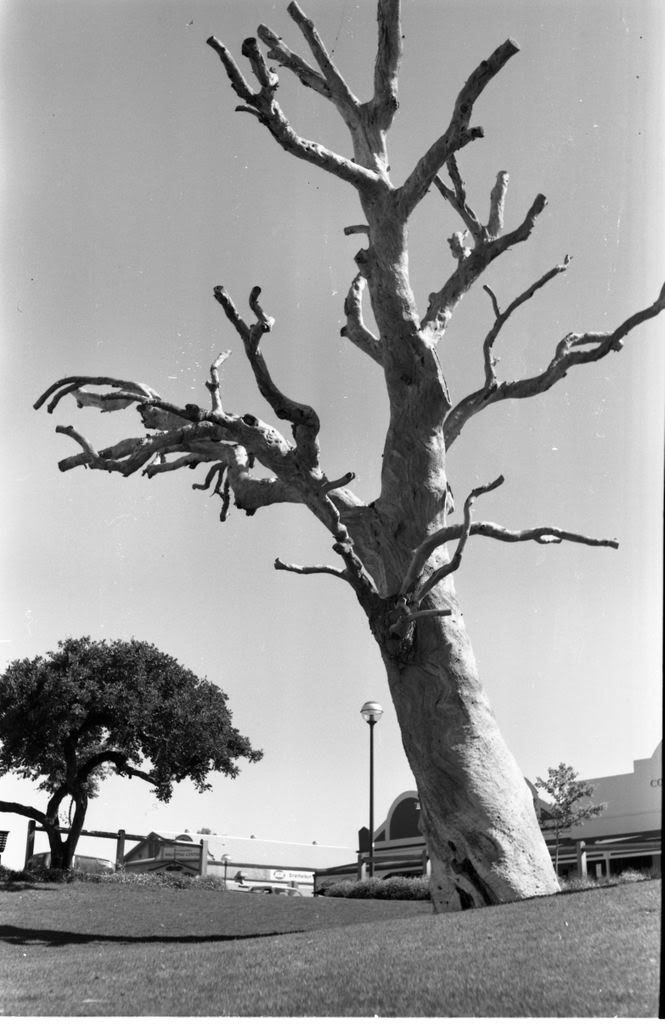chippy
foo was here
I've taken the Albada finders apart on three Super Ikonta Cs. Not hard to do, just use care not to chip the glass on the front element when you remove it from the carrier.
On the 531/2 Ikontas, the front element consists of two pieces of glass cemented together with Canada Balsam. One of the inside surfaces has a semi silvered side which can deteriorate. As well, the Canada Balsam will darken.
The problem can be compounded by the yellowing of the little piece of plastic (probably, nitro cellulose) which has the frame lines. If this is removed the image is only improved slightly, and then of course you've lost the frame lines.
The general consensus, I've seen so far, suggests that there may be no solution to the crappy Albada finders on Super Ikontas. Well, actually.....there is one: replace the finder with the finder from a Moskva II, or first version Moskva IV. They fit, oddly enough, but don't really look right.
thats an acurate discription literiter, better than mine haha, i forgot to mention the front peice is two pieces stuck together also, ...thanks for mentioning..i tend to agree the moskva viewfinders dont look right either


